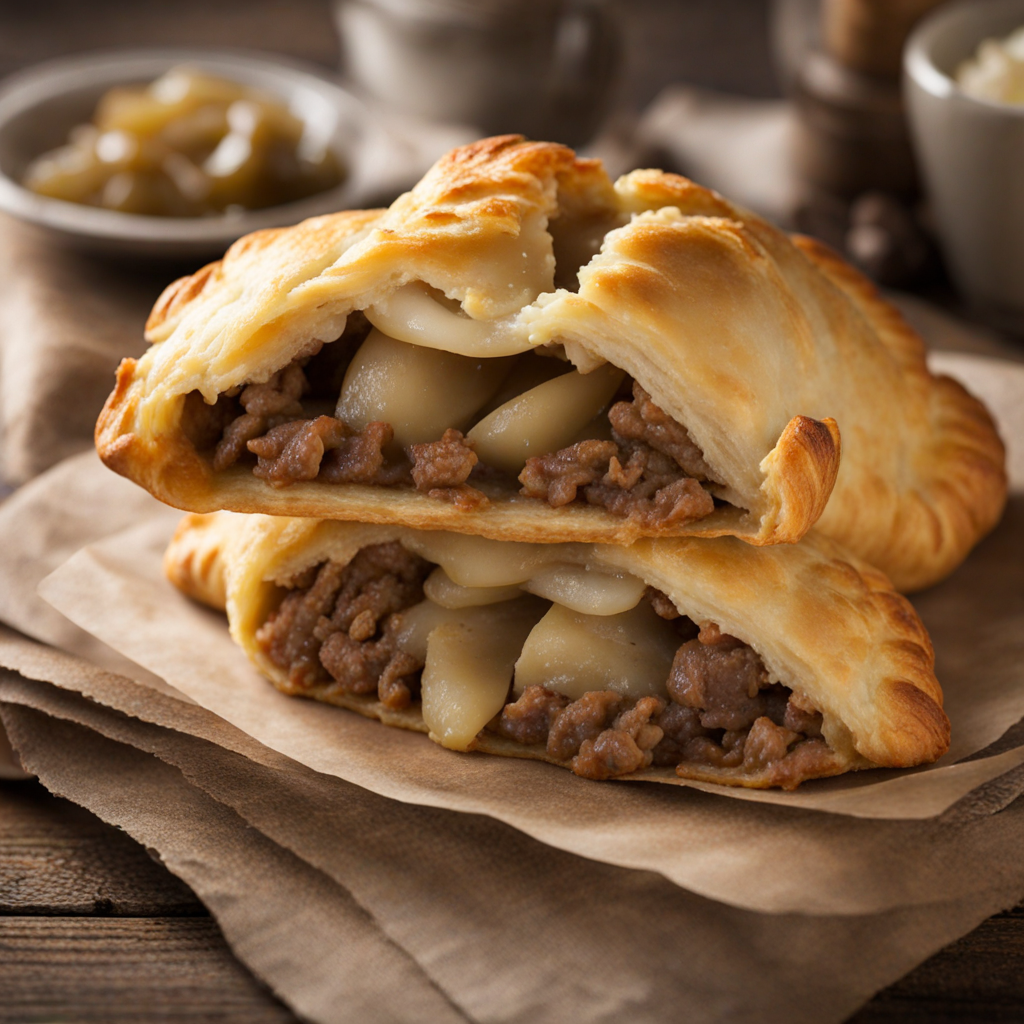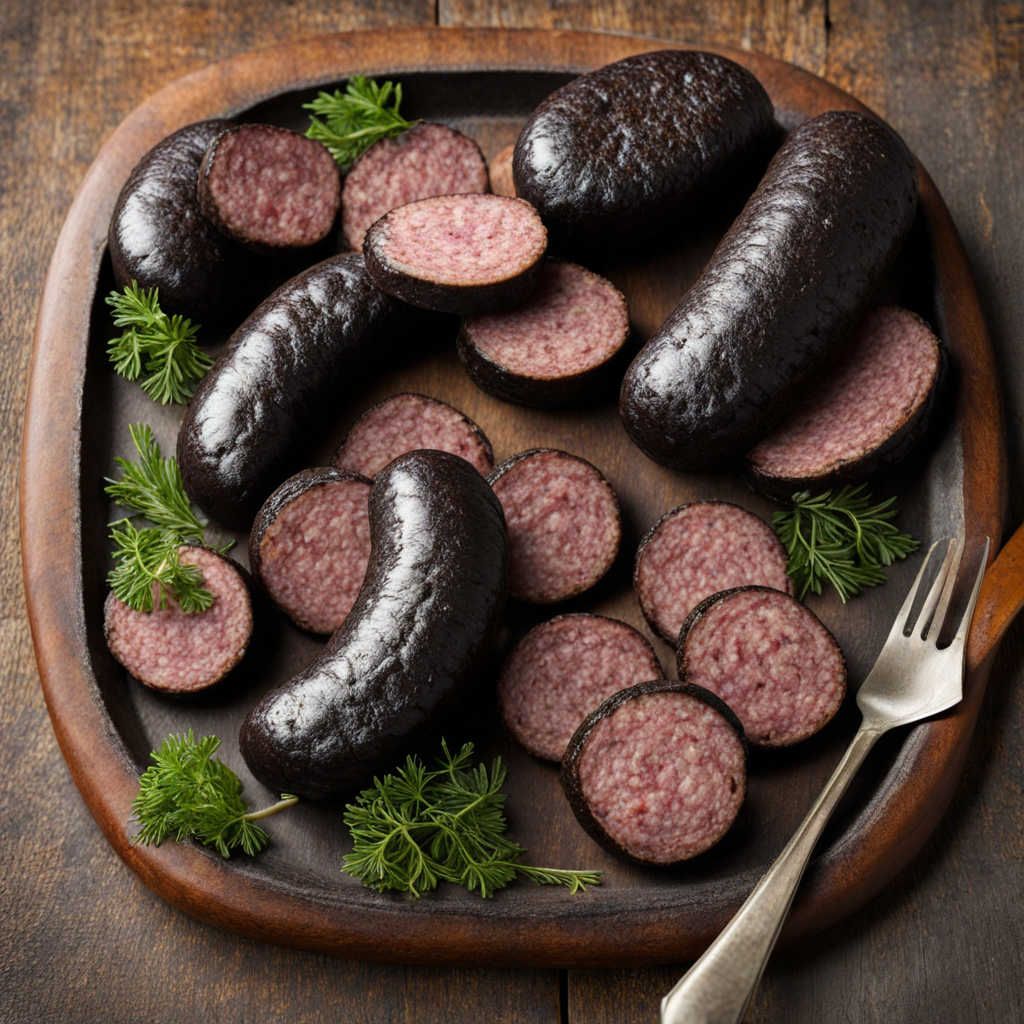Cornish Pasty
Cornish Pasty is a traditional British dish that hails from Cornwall, a picturesque region in the southwest of England. This iconic pastry is characterized by its distinctive half-moon shape, typically made from a shortcrust pastry that is both flaky and golden. The allure of the Cornish pasty lies in its hearty filling, which traditionally includes a savory combination of diced beef, potatoes, swede (rutabaga), and onions, seasoned to perfection. Each ingredient is carefully selected to create a well-balanced flavor profile that is both comforting and satisfying. The pasty is often hand-crimped on one side, which not only seals in the delicious filling but also adds to its rustic charm.
How It Became This Dish
The Cornish Pasty: A Culinary Tradition of the United Kingdom #### Origins The Cornish pasty, a quintessential British dish, has its origins deeply rooted in the mining communities of Cornwall, a region in the southwestern part of England. The pasty is a baked pastry filled traditionally with a mixture of meat (usually beef), potatoes, swedes (also known as rutabagas), and onions, all encased in a crimped crust. The origins of this hearty meal can be traced back to the early 13th century, although it became widely popular in the 18th and 19th centuries, coinciding with the peak of Cornwall's tin and copper mining industries. The pasty was not merely a meal; it was a practical solution for miners who needed sustenance during long shifts underground. The thick crust acted as a handle, allowing miners to eat without direct contact with the food, thereby avoiding contamination from their dirty hands. The crust was often discarded after the meal, believed to protect the eater from the evil spirits of the mines. This practical aspect of the pasty made it an ingenious and essential food item for the working class of Cornwall. #### Cultural Significance The Cornish pasty is emblematic of Cornish identity and culture. It is not just a food item but a symbol of pride and heritage for the people of Cornwall. In 2011, the pasty was granted Protected Geographical Indication (PGI) status by the European Union, meaning that only pasties made in Cornwall using traditional methods can be labeled as "Cornish pasties." This status is akin to the protections afforded to other regional specialties like Champagne or Roquefort cheese. The pasty has transcended its practical origins to become a celebrated dish in Cornish festivals and culinary events. The annual Cornish Pasty Festival, held in various locations throughout Cornwall, celebrates this iconic food with competitions, tastings, and educational workshops. The pasty is not just a culinary delight; it is a cultural artifact that connects the community, inviting both locals and tourists to partake in its rich history. #### Development Over Time As mining declined in the late 19th and early 20th centuries, the Cornish pasty began to evolve. With the rise of tourism in Cornwall, the pasty started to gain popularity beyond its traditional base. Bakeries began to cater to a wider audience, experimenting with fillings and flavors. Contemporary variations now include vegetarian options, seafood pasties, and even dessert pasties filled with fruits and sweet ingredients. The 20th century saw the pasty becoming a staple of British cuisine, especially in regions outside Cornwall. Bakeries across the UK began to adopt the concept, leading to a proliferation of styles and recipes. However, the traditional Cornish pasty remains steadfast in its basic ingredients and unique crimping technique, which distinguishes it from other pastry dishes. In the 21st century, the pasty has been embraced by the street food movement, appearing at food fairs, markets, and festivals across the UK and beyond. Its portability, hearty nature, and comforting flavors make it an ideal choice for modern consumers seeking quick, satisfying meals. The Cornish pasty has even made its way into popular culture, featured in television shows and films, and has been referenced in literature, showcasing its enduring appeal. #### The Crimping Technique A characteristic feature of the Cornish pasty is its crimped edge, which not only serves to seal the filling inside but has also become a point of cultural significance. Traditionally, the crimping was done on one side, a technique that has been passed down through generations. It is believed that the crimping style can indicate the pasty-maker's origin or family tradition, adding a personal touch to each creation. The crimping also serves a practical purpose: it helps to keep the filling from leaking out during cooking and adds to the overall aesthetic of the pasty. #### Modern Variations and Global Influence While the traditional Cornish pasty remains a beloved dish, modern interpretations continue to emerge. Chefs and home cooks alike experiment with fillings that reflect contemporary tastes and dietary preferences. Vegan pasties filled with lentils, mushrooms, and a medley of vegetables have gained traction, catering to a growing audience seeking plant-based options. Sweet pasties, filled with apple, cinnamon, and other fruits, have also become popular, showcasing the versatility of this humble pastry. Beyond the UK, the Cornish pasty has influenced international cuisine. Variants can be found in Australia, where the pasty was introduced by Cornish miners during the gold rush of the 19th century, and in the United States, particularly in regions with strong Cornish heritage. The pasty has become a symbol of the Cornish diaspora, connecting those who have moved away from Cornwall to their roots through food. #### Conclusion The Cornish pasty is more than just a delicious meal; it is a celebration of heritage, craftsmanship, and community. From its humble beginnings as a miner's lunch to its status as an iconic British dish, the pasty has undergone significant transformations while retaining its essential character. It symbolizes the resilience of a community that has faced economic challenges yet remains proud of its culinary traditions. As we look to the future, the Cornish pasty will likely continue to adapt and evolve, reflecting the changing tastes and preferences of society while honoring its storied past. In every crimped edge and savory bite, the Cornish pasty tells a story of history, culture, and the enduring power of food to connect people across generations and geographies.
You may like
Discover local flavors from United Kingdom







